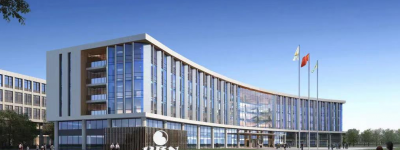Although the feed business contributed over 50% of New Hope Liuhe’s revenue in 2021, pig farming remains its pivotal core business. Faced with substantial losses across the industry, the company is enhancing internal management capabilities and improving production and operation efficiency through various measures. It hopes to gradually reduce costs and overcome the difficulties during the bottom of the pig cycle.
As the top-ranked agri-food company in the Chinese feed industry for many years, New Hope Liuhe was relatively late in deepening the pig business. From 2019 to 2020, to seize the opportunity period after the outbreak of African swine fever and respond to the national call for stable production and supply, the company significantly increased its pig investment, resulting in rapid growth in pig production capacity. Its pig production volume in 2020 increased by 186% to 8.29 million heads, ranking fourth in China.
New Hope stated that compared with the beginning of 2020, the independent accounting subsidiaries managed by its pig business department increased by one time, the breeding sows increased by three times, and the employees increased by 3.5 times YOY at the beginning of 2021.
The leapfrog development increased the market share, completed the balanced layout in the advantageous regions in China, promoted the resumption of pig production and supply, and laid a sound foundation for the next stage of operation. Additionally, it brings new requirements and challenges to the company’s management ability.
Meanwhile, the sharp drop in pig prices since 2021, the substantial rise in feed raw material prices, and the outbreak of a new round of attenuated strains of African swine fever in several northern provinces made the pig industry suddenly encounter an extremely unfavorable external environment. In 2021, New Hope decided to shift from the rapid expansion phase of the past two years to a degree of sound operation.

“We are firmly committed to our medium and long-term strategic goal of expanding and strengthening our pig business, but with the changes in the external environment in recent years, the company will focus on quality growth in terms of long-term value. We will adhere to the development rhythm that matches the pig herd stock, team building, and management capabilities, ensure effective and qualified pig production volume and operation results,” the company said.
New Hope also stated although its pig-raising costs increased due to the rapid expansion and impact of attenuated strains of African swine fever, there is an optimistic horizon. The overall costs have been gradually decreasing since the company fully shifted to a stable operation state from 2021 onwards, enabling the company to regain its competitiveness in the future.
Slow down pace and keep steady operation
In 2021, New Hope Liuhe adjusted its development pace based on changes in the supply and demand and prices of the external industry and a careful assessment of its internal production management capabilities.
It called off the purchase of piglets and breeding stock at the end of the first quarter, reducing the loss resulting from the high purchasing cost of piglets in the first half of 2021 and low selling prices of finishing pigs in the second half of the year.
In terms of capacity optimization, it slowed down the construction of new breeding farms. For fattening farms, it carefully arranged the construction schedule according to the related supporting capacity and the general ability of the staff team.
According to their production rhythm, the self-fattening farms temporarily used for early-stage breeding farms will be gradually adjusted back to fattening purposes.
The breeding farms and self-fattening farms leased in the past two years for rapid development will be gradually leased out based on their cost-benefit calculation.
The farms affected by the attenuated strains of African swine fever in the first half of the year for the long term, with low loading rate, poor production efficiency and cost, were also suspended and reorganized in time. Overall, it will consolidate production capacity, pig herds, and staff teams and optimize resources to achieve higher efficiency.

By the end of 2021, its breeding farms built and under construction had a stock capacity of nearly 1.7 million heads, of which the loading rate of breeding farms in regular operation was almost 90%. The stock capacity of completed and under-construction fattening farms had reached 6.8 million heads. The annual pig production volume has increased by 20% YOY to nearly 10 million head.
“The above production capacity is sufficient to meet the self-supply of piglets and the self-fattening needs for this year and next year.”
New understanding of the commercial pig fattening model
It stated that in the first 2-3 years of the outbreak of African swine fever, farmers couldn’t achieve good prevention and control effects due to a lack of technology and experience, coupled with many restrictions on equipment and facilities, with high biosecurity risk.
Excellent companies in the industry that adopt the integrated self-fattening model can achieve better epidemic prevention and control effects than farmers through the refined management of the production process.
This has led many companies to consider increasing the percentage of self-fattening in the medium to long term.
However, farmers have improved their technical experience and equipment regarding African swine fever prevention in the past year, narrowing the gap with the corporate self-fattening model.
Additionally, the continuous mutation of the African swine fever virus has evolved with a longer incubation time and is more challenging to detect. This makes the large enterprise self-fattening farms, usually with tens of thousands of stockings, encounter tremendous pressure to prevent and control African swine fever.
The farmer-fattening farms, which usually have a stock of 2-3 thousand heads, are more flexible and competitive in terms of fattening costs.
“In addition, after the rapid development of the past 2-3 years, many enterprises are relatively tight in terms of capital, talent, especially talents specialized in self-fattening business, so it predicts the cooperative farming model of ‘company + farmers’ will remain the mainstream model in the industry in the next 3-5 years,” New Hope said.
It also holds that with the gradual recovery of the company’s capital and self-fattening talents, plus more and more automation and information equipment, are popularized in the industry. These are easier to popularize and implement in the self-operated fattening farms of enterprises than in the cooperative fattening farms of farmers. Consequently, large enterprises may continue to increase the proportion of self-fattening.
According to the report, the annual marketed pig’s ratio of its integrated self-farming and contract farming in 2021 is about 1:4, and the year-end stocking ratio is about 2:3.



